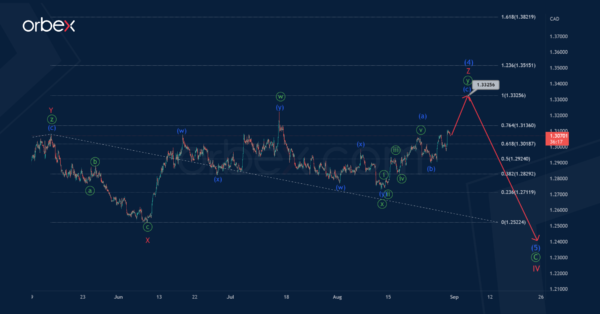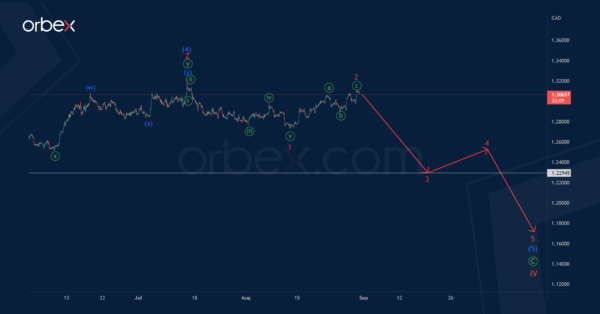The current USDCAD timeframe shows the internal structure of the long-term correction wave (4) of the intermediate degree, which is part of the global downward impulse Ⓒ of the primary degree.
It is likely that the correction wave (4) is a sideways wave consisting of minor waves W-X-Y-X-Z. Most likely, the sub-waves W-X-Y-X have already been fully built. Not so long ago, the second intervening wave X was completed, and now the price is rising in the final wave Z, taking the form of a minute double zigzag.
The pair may rise in the minor wave Z to 1.332. At that level, wave Z will be at 100% of previous actionary wave Y.
Then, after reaching the specified price level, we could see a market reversal and the beginning of a decline in bearish impulse (5).
According to the alternative, the formation of the intermediate correction wave (4) could be fully completed. Therefore, let’s assume that the first sub-waves of the descending intermediate impulse (5) are formed.
It is possible that impulse 1 and bullish correction 2 have been fully completed today, and now we see a decline in the minor wave 3.
The target for bears is at 1.229. This is the previous minimum. Upon reaching this level, a small corrective rise is expected within the bullish correction 4.
An approximate scheme of possible future movement is shown on the chart.














